In Boccaccio
Valerius Maximus served as the source for Boccaccio's more elaborate account of Hippo. [2] [3]
Boccaccio observed that no history of her ancestry or her place of birth survived, other than from "books of the ancients" which stated that she was Greek and that she was known for a single virtuous act. He gave a more detailed explanation than Valerius Maximus of Hippo's decision to kill herself, stating that she was beautiful and was aware that her captors planned to rape her. He says that after being tossed by the waves, Hippo's body was cast onto the Erythraean shore, where the inhabitants buried her like one who had been shipwrecked, but that her name and the cause of her death were later disclosed by her enemies, when the Erythraeans built her a great, long-lasting tomb as a memorial.
Boccaccio himself praised Hippo's conduct, remarking that she saved her chastity at the cost of perhaps a few more years of life and gained with her premature death eternal honour for herself. [4]

The Book of the City of Ladies, or Le Livre de la Cité des Dames, is a book written by Christine de Pizan believed to have been finished by 1405. Perhaps Pizan's most famous literary work, it is her second work of lengthy prose. Pizan uses the vernacular French language to compose the book, but she often uses Latin-style syntax and conventions within her French prose. The book serves as her formal response to Jean de Meun's popular Roman de la Rose. Pizan combats Meun's statements about women by creating an allegorical city of ladies. She defends women by collecting a wide array of famous women throughout history. These women are "housed" in the City of Ladies, which is actually the book. As Pizan builds her city, she uses each famous woman as a building block for not only the walls and houses of the city, but also as building blocks for her thesis. Each woman introduced to the city adds to Pizan's argument towards women as valued participants in society. She also advocates in favour of education for women.
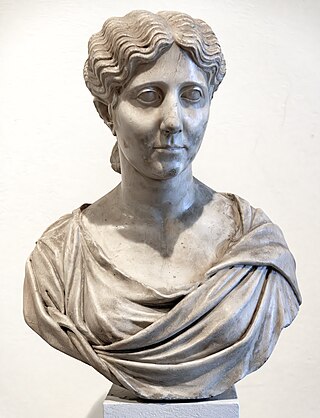
Antonia Minor was the younger of two surviving daughters of Mark Antony and Octavia Minor. She was a niece of the Emperor Augustus, sister-in-law of the Emperor Tiberius, paternal grandmother of the Emperor Caligula and Empress Agrippina the Younger, mother of the Emperor Claudius, and maternal great-grandmother of the Emperor Nero. She outlived her husband Drusus, her oldest son, her daughter, and several of her grandchildren.
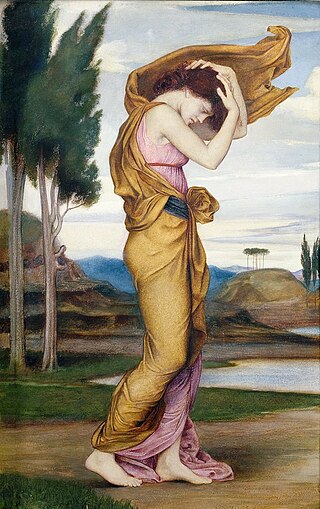
Deianira, Deïanira, or Deianeira, also known as Dejanira, is a Calydonian princess in Greek mythology whose name translates as "man-destroyer" or "destroyer of her husband". She was the wife of Heracles and, in late Classical accounts, his unwitting murderer, killing him with the poisoned Shirt of Nessus. She is the main character in Sophocles' play Women of Trachis.
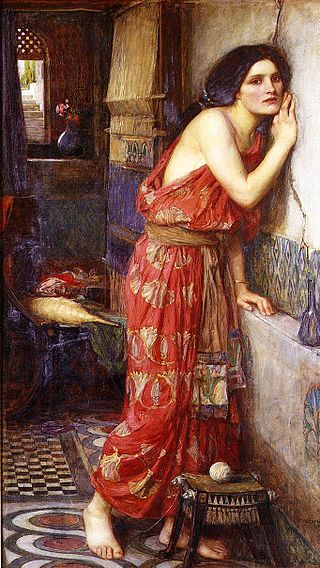
In Greek mythology, Pyramus and Thisbe are a pair of ill-fated lovers from Babylon, whose story is best known from Ovid's narrative poem Metamorphoses. The tragic myth has been retold by many authors.
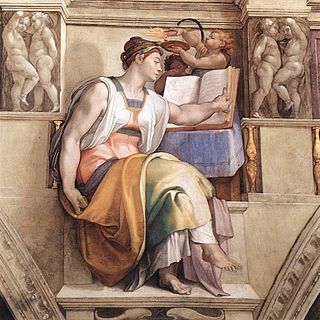
The Erythraean Sibyl was the prophetess of classical antiquity presiding over the Apollonian oracle at Erythrae, a town in Ionia opposite Chios, which was built by Neleus, the son of Codrus.

In Greek mythology, Jocasta, also rendered Iocaste and also known as Epicaste, was a daughter of Menoeceus, a descendant of the Spartoi Echion, and queen consort of Thebes. She was the wife of first Laius, then of their son Oedipus, and both mother and grandmother of Antigone, Eteocles, Polynices and Ismene. She was also sister of Creon and mother-in-law of Haimon.
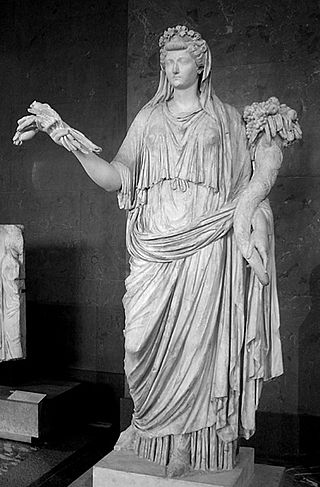
In ancient Roman religion, Ops or Opis was a fertility deity and earth goddess of Sabine origin. Her equivalent in Greek mythology was Rhea.

Tanaquil was the queen of Rome by marriage to Tarquinius Priscus, the fifth King of Rome.

Artemisia II of Caria was a naval strategist, commander and the sister and the successor of Mausolus, ruler of Caria. Mausolus was a satrap of the Achaemenid Empire, yet enjoyed the status of king or dynast of the Hecatomnid dynasty. After the death of her brother/husband, Artemisia reigned for two years, from 353 to 351 BCE. Her ascension to the throne prompted a revolt in some of the island and coastal cities under her command due to their objection to a female ruler. Her administration was conducted on the same principles as that of her husband; in particular, she supported the oligarchical party on the island of Rhodes.

De Mulieribus Claris or De Claris Mulieribus is a collection of biographies of historical and mythological women by the Florentine author Giovanni Boccaccio, composed in Latin prose in 1361–1362. It is notable as the first collection devoted exclusively to biographies of women in post-ancient Western literature. At the same time as he was writing On Famous Women, Boccaccio also compiled a collection of biographies of famous men, De Casibus Virorum Illustrium.
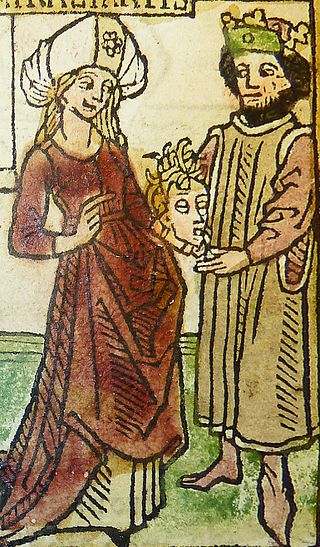
Chiomara was a Galatian noblewoman and the wife of Orgiagon, chieftain of the Tectosagi, one of three Galatian tribes during the Galatian War with Rome, of 189 BC.

Pompeia Paulina was the wife of the statesman, philosopher, and orator Lucius Annaeus Seneca, and she was part of a circle of educated Romans who sought to lead a principled life under the emperor Nero. She was likely the daughter of Pompeius Paulinus, an eques from Arelate in Gaul. Seneca was the emperor's tutor and later became his political adviser and minister. In 65 AD Nero demanded that Seneca commit suicide, having accused Seneca of taking part in the Pisonian conspiracy against him. Paulina attempted to die with her husband, but survived the suicide attempt.

In ancient Greek and Roman legendary history, Marpesia was Queen of the Amazons with Lampedo, her sister, as a co-ruler. They ruled with Hippo ("horse") after the death of Lysippe.

Lampedo is an Amazon queen mentioned in Roman historiography. She ruled with her sister Marpesia. The sisters called themselves daughters of Mars to put terror in the heart of their enemies to show they were incredible warriors to be feared. Her name was speculated to refer to traditional New Moon torchlit processions in honor of Artemis, goddess of the hunt.

Megullia, surnamed Dotata, was an ancient Roman noblewoman.

Verginia, sometimes spelled Virginia, was the daughter of Aulus Verginius, a Roman patrician. Her example of modesty and virtue in the face of adversity became famous in antiquity, and during the Middle Ages, she was celebrated as one of Boccaccio's Famous Women.

Sulpicia was an ancient Roman woman whose outstanding sexual integrity (pudicitia) earned her the honor of instituting the cult of Venus Verticordia.
Harmonia was a Sicilian princess of Magna Graecia, daughter of Gelo, the son of King Hiero II of Syracuse. She was the wife of Themistius.

Curia was a Roman woman, and the wife of Quintus Lucretius Vespillo. The name "Curia" is possibly derived from the nomen Curius.
There are several figures in Greek mythology named Manto, the most prominent being the daughter of Tiresias. The name Manto derives from Ancient Greek Mantis, "seer, prophet".



















